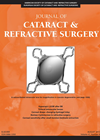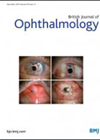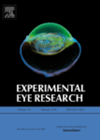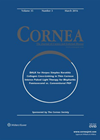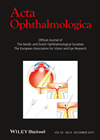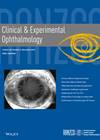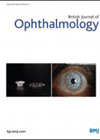
Journal Reviews archive for April 2016
Implantation of diffractive trifocal intraocular lens
This study reports on 60 eyes of 120 patients who underwent routine cataract surgery followed by implantation of the trifocal IOL model Lisa tri-839MP. This is a diffractive trifocal preloaded IOL with no interruption at the haptic-optic junction, 360 degrees...
Clinical evaluation of a new pupil independent diffractive MIOL lens with a ±2.75D near addition
This is a clinical outcome assessment after cataract surgery with implantation of multifocal intraocular lens implant IOL with a lower near addition (+2.75D) of 143 eyes of 85 patients aged between 40 to 83 years of age. The type of...
Nanofiber-based hydrogels prevent capsular opacification
Lens refilling is the replacement of the lens with a silicone polymer in an otherwise intact lens capsule. However, capsular opacification (CO), resulting in reduced visual acuity, is a major complication of these injectable accommodating lenses. Opacification is due to...
Dry eyes after photorefractive keratoplasty
This study examined changes in tear break up time (TBUT), Schirmer test, tear osmolarity and dry eye questionnaire (OSDI) score from prior to photorefractive keratoplasty (PRK), to two months and four months postoperatively. Fifty eyes of 25 patients were examined....
Treatment of Sjogren’s Syndrome dry eye in mouse model
Sjogren’s syndrome (SS) is a chronic autoimmune disease characterised by inflammation of the exocrine glands, specifically the salivary and lacrimal glands that produce saliva and tears, respectively. The immune-mediated attack on the salivary and lacrimal glands leads to the development...
Central corneal and epithelial thickness measured by Fourier domain OCT
This study examined intraobserver and interobserver reproducibility of corneal thickness (CT) and epithelial thickness (ET) measurement of Fourier domain OCT (RTVue) in 23 healthy volunteers. RTVue is capable of producing 26,000 A scans per second with depth resolution of 5µm....
Corneal tattooing as treatment for bullous keratopathy
This retrospective study looked at differences in epithelial smoothing in patients with bullous keratopathy (BK) undergoing either corneal tattooing or anterior stromal puncture (ASP). Both procedures were carried out for symptomatic relief in eyes with poor visual potential. Chinese ink...
A population based follow-up study on pseudoexfoliation and cataract surgery
n association between pseudoexfoliation (PEX) and cataracts has been shown in many previous studies. Recently, the Australian Blue Mountains Eye Study, using the Wisconsin Cataract Typing and Grading System, observed an increased prevalence of nuclear cataract in eyes with PEX....
Resveratrol protects against steroid induced intraocular pressure
Topical and systemic steroid delivery is a very effective treatment for many ocular conditions but is compromised by raised intraocular pressure which in turn leads to death of retinal ganglion cells and irreversible blindness. This is an important consideration with...
Aflibercept for the treatment of neovascular glaucoma
The aim of this study was to investigate initial results regarding the treatment of neovascular glaucoma (NVG) with intravitreal aflibercept. NVG is classified into stages 0-3. In stages 1 and 2, abnormal vessel proliferation is seen with or without elevated...
SS-OCT assessment of ITC after phacoemulsification
This is a multicentre randomised controlled trial of 22 patients with primary angle closure glaucoma with peripheral anterior synechia and peripheral primary angle closure glaucoma (PACG) with peripheral anterior synechia (PAS) detected by indentation gonioscopy was randomised into two groups....
Localising the cause of bloody tears
The authors present two cases of ‘idiopathic’ bloody tearing. The paper presents the potential causes of bloody tearing, highlighting the difficulty that can be encountered in diagnosing and managing these patients. The authors use punctal plugs in these cases which...

